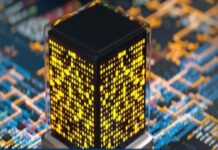The simplest way to explain the Internet of Things, or IoT, is to say it’s the technology of connecting devices to the internet. Why is this important?
The IoT is important because it allows a device to have more intelligence than it would as a stand-alone device. As a simple example, how much better is your smartphone today than it was 15 years ago when it lacked access to the internet? All it could do was call and send overpriced text messages. Fast, easy access to the internet opened your device up to a whole new reality, one in which it could send and receive information at ease.
Thanks to the internet, the world is at our fingertips — and it seemed to happen in the blink of an eye. Your phone can now act as an interface to control devices that surround you on a daily basis. You can now remotely:
- Monitor your home security
- Answer, lock, and unlock your door
- Control your home electronics
- Adjust your thermostat
- Water your plants
- Get real-time updates on smoke and carbon monoxide levels
- Tend to your aquarium
- Control your lights and blinds
Imagine, too, all of the services on your smartphone that use GPS functionality and how your life would be altered if that went away. No more ridesharing services, no more up-to-the-minute driving directions, no more food deliveries ordered via apps. Your phone is host to numerous sensors that make up part of the Internet of Things landscape.
Via Salesforce
The IoT ecosystem goes beyond smartphones.
We’re moving into a world that’s increasingly connected, where everything around us tells everything else how it’s doing. These devices and sensors can act with or without our input; they exchange information and “talk” with other internet-connected devices. They also give us the chance to manually take action on the data they receive, and let us automate behaviors with other devices.
It’s an incredible feat of technology. Gartner estimated that there would be 14.2 billion internet-connected things in use in 2019. They forecast that the total will reach 25 billion by 2021. In “Leading the IoT,” they write, “These ‘things’ are not general-purpose devices, such as smartphones and PCs, but dedicated-function objects, such as vending machines, jet engines, connected cars, and a myriad of other examples.”
Furthermore, Parks Associates reports that “U.S. broadband households now own more than 10 connected devices.” Many of these devices are highly concentrated in urban areas for two reasons:
- In more developed, urban areas, businesses use the data points provided by the devices to make critical business decisions
- Higher populations of tech-savvy individuals want to track and automate parts of their lives
The Internet of Things is about connected data.
Imagine: Your alarm goes off and sends a signal to a voice-activated virtual assistant. As it audibly lists your preferred programming, such as your daily calendar or stock news, a signal is sent to your coffee maker, which starts to brew a cup of coffee. You get out of bed and move through the house, and lights turn on and off due to rules you set up with your motion sensors. As you finish getting ready, your car receives a signal to turn itself on before you even walk out the door.
The IoT is the driving force behind what Klaus Schwab, Founder and Executive Chairman of the World Economic Forum, terms the Fourth Industrial Revolution. Schwab believes, “The changes are so profound that, from the perspective of human history, there has never been a time of greater promise or potential peril.”
Rural communities, especially farmers, use the IoT to make their jobs easier through rapid sampling and automation. Sensors can relay information about soil quality and water content, look up upcoming weather reports, and turn on or off irrigation systems automatically based on data.
To track illegal logging, park services workers can install sensors in protected forests that listen for the distinct sounds of chain saws. It’s possible for multiple sensors to determine sound distance and triangulate locations, then deploy surveillance drones in the area to capture footage of those responsible.
Data connected by the internet works together to improve lives and potentially benefit society. However, it takes more than an internet connection to get the Internet of Things to operate.
How does the IoT work?
The use cases are endless for the Internet of Things, but explaining how they actually work can be a bit tricky. For one, there is no single way that a device connects to the IoT ecosystem.
A device does not have to connect directly to the internet in order to communicate with the network. Instead, devices talk in their own communication protocols until data needs to make its way to a connected system.
There are several communication technologies, including NB-IoT, LTE-M, LoRa, SigFox, LPWAN, Zigbee, Z-Wave, and more. Different sensors and devices use these technologies to communicate with each other within the same family ecosystems. From there, each of these devices connects to a communications hub that interfaces with the internet to share data back and forth. The choice of which type of communication layers to use for IoT sensors is dependent on the use case, as some are better for low power and long range, such as LoRa, while others such as Zigbee are meant for home automation devices.
Once you have sensors recording data and talking with their communications hubs, they can interface with an Internet of Things platform for remote monitoring and rules generation. There are hundreds of platforms to choose from, and it can be overwhelming to pick a platform that is best for your application. But most importantly, you need to decide which type of IoT platform you need:
- End-to-end platforms are complete systems that include your devices and software, and manage interactions for you
- Connectivity platforms simply help you connect devices to the internet through Wi-Fi and cellular connections
- Data platforms move and analyze sensor data to provide dashboard analytics
- Cloud platforms help with network stacks so you don’t have to worry about the hassle of setting up systems to handle the millions of transactions happening across the network
Your customer relationships benefit from the Internet of Things.
Companies today can keep on top of current trends and create efficiencies in logistics systems, but one of the most valuable aspects of having the Internet of Things is the ability for companies to track the usage of their products and use that data to improve customer experiences.
Your refrigerator can alert you when your water filter needs to be changed, or if there is an issue with excess humidity, a temperature imbalance, or compressor inefficiency — all without any input from you, the customer. Preventative maintenance can be automatically scheduled if you are within warranty, saving you the cost and headache of calling a repair person after food has spoiled.
The integration of customer data with sensor data allows a company to solve a problem before a customer knows anything is wrong or gets upset. This ability to be proactive helps both parties, as it improves customer service, product quality, and reliability. It can also influence future product development by allowing companies to focus on the most important and most used features of a product.
That makes for a better consumer landscape. There is great value to both businesses and customers in integrating customer data with the Internet of Things so long as consumer privacy can be maintained. Any company not implementing IoT sensors to watch over aspects of their business will eventually lose market share to competitors that fully utilize the potential of IoT data.
In the commercial and industrial industries, IoT sensors allow for more efficient operations, which leads to increases in the bottom line. B2B companies will develop tighter integrations through the use of IoT systems as they share each other’s IoT data. An automaker that produces cars with a just-in-time process is reliant on all its vendors to deliver car parts in a particular order and on time. With their Internet of Things technology, the automaker can now, with relative ease, know if there is an issue with vendors and can adjust accordingly before it causes a problem.
We’re running headfirst into a growing ecosystem of devices, with nearly full control over how we want to use the data to improve lives. Schwab, in writing about the opportunities this technology presents, says leaders and citizens must “together shape a future that works for all by putting people first, empowering them, and constantly reminding ourselves that all of these new technologies are first and foremost tools made by people for people.” Companies that invest in the Internet of Things with their customers in mind will be ahead of the curve and benefit from it.

















